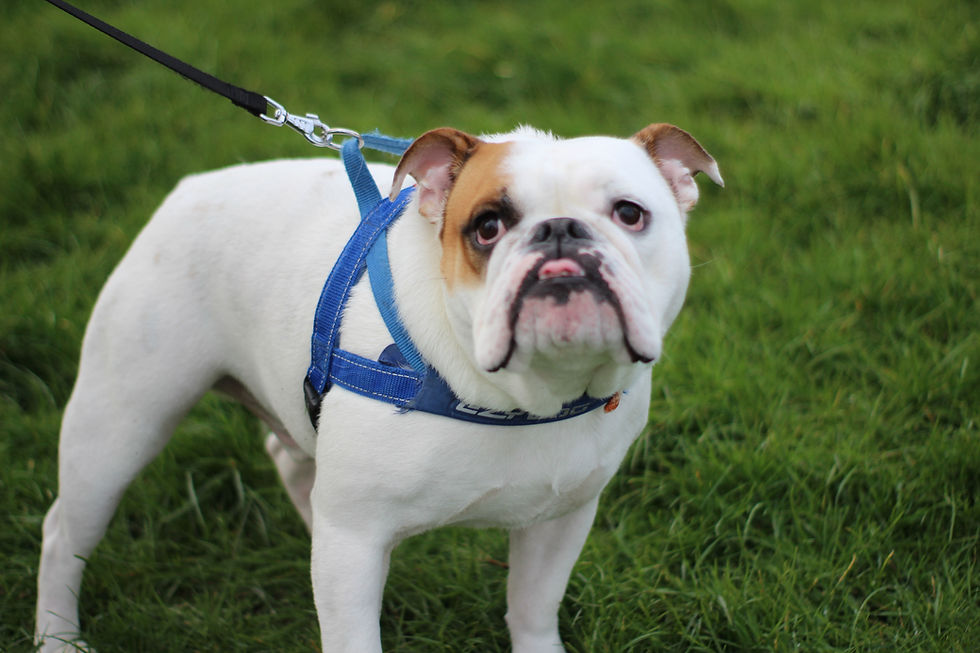Why is My Cat Drooling?
- Kaileigh Slowinski
- Sep 28, 2022
- 4 min read
Updated: Sep 26

Original publish date: September 28, 2022 | Last updated: September 26, 2025
How often do we pet our cats, only to have them drool all over our hands, laps, or the couch? The answer is too many if you have any of my four boys: Hoyle, Bear, Draco (Frumbumbly), or Bartok the Magnificent (Bart). While this behaviour may seem cute to some (I am not of this group; I like my snuggle sessions drool-free), there does come a time when their drooling should be of concern.
But first, we will explore the Normal Drool; this is where Hoyle and Bart shine.
Happiness/Relaxation
This is the drool that rains down when our cats get the best chin scratches or find the perfect spot on our laps. It is their way of letting us know we have hit the right spot, or they are curled up in the right place, and are feeling happy and content.
Hoyle likes to stand on me in the mornings and drool on my neck while I lie in bed. There is nothing I can do to change his drooling behaviour; I simply pull the sheet higher up. Bart is incapable of lying in my lap without becoming a small drool waterfall and soaking my sweatpants because he is so happy.
Keeping a small cloth handy to wipe up after them could help if the drool is an issue.
Natural Response
It is a typical (and cute!) behaviour for our cats to knead or “make biscuits”, and during this, some will take it further and drool. The current theory is that this is a leftover response from kittenhood when they would massage their mother for milk. Not all cats will drool at the sight of food, unlike dogs; however, it can still happen.
On the other hand..
Stress or fear may cause them to temporarily drool, such as during loud events, car rides, and vet visits. Some owners find the use of calming aids to be beneficial in these situations, and there are various types available — homeopathic, synthetic pheromones, or pharmaceutical if it is an extreme case. If it is occurring while they are in their carrier, placing their carrier in an accessible location and allowing them to explore it may help desensitize them; treats can always help expedite this process.
If your cat is drooling during these moments, it is normal (and maybe a bit upsetting for us), and it will pass.
Now, this is when we should be more concerned with why our cat is drooling.
Dental disease. This is fairly common, especially in cats who eat kibble, yet it is easy to prevent. Regular brushing with a toothbrush or gauze on a finger will help. Additionally, adding extra hydration to your cat’s diet may encourage more food particles to pass from the mouth to the stomach and reduce the amount of build-up in the mouth. A foreign body. Cats love to chew and eat things they should not — check to see if there is an object lodged in the mouth, gums, or throat. If so, urgent care is needed by their veterinarian. Poisoning. Many household items can be poisonous to cats, including cleaners and certain plants. Check for evidence that your cat may have been exposed to a poison (such as nibbled leaves of plants or flowers, knocked over cleaner bottles, open closets/cupboards), and if in doubt, call an emergency veterinarian as soon as possible. Pain. Excessive cat drooling can be a sign of pain caused by trauma or any number of things. Take note of how they are moving, or not moving, and see if they are receptive to touch. If you notice any obvious signs of discomfort, contact your veterinarian immediately. Our cat’s behaviour is different from ours when it comes to pain — you might not even know your cat is in pain because they’re great at hiding it.
Nausea. Outside of car rides or other situations that cause motion sickness, if your cat is showing signs of nausea, drooling, a loss of appetite, diarrhea, listlessness, or vomiting, you should have your vet check it out. Upper respiratory infection. They get them just like we get them. This is pretty much like a kitty cold—it’s easy to catch, especially in shelters or similar conditions where they are around a lot of other cats from different households. If your cat is drooling and sneezing, making a wheezing or rattling noise while breathing, or has discharge from the nose or eyes, it is time for a vet appointment.
Heatstroke. Just like us, cats can get heatstroke. The signs are very similar and include rapid breathing, vomiting, listlessness, and poor motor control. If your cat is showing any of these signs, especially if it has been hot and they have exposed to the heat, combined with drooling, they could be suffering from heatstroke. Call the emergency veterinarian immediately and follow their instructions.
It is always a good idea to keep a mental checklist of your animal's day-to-day behaviour. Sometimes what appears to be a cute little action is actually a red flag.




Comments